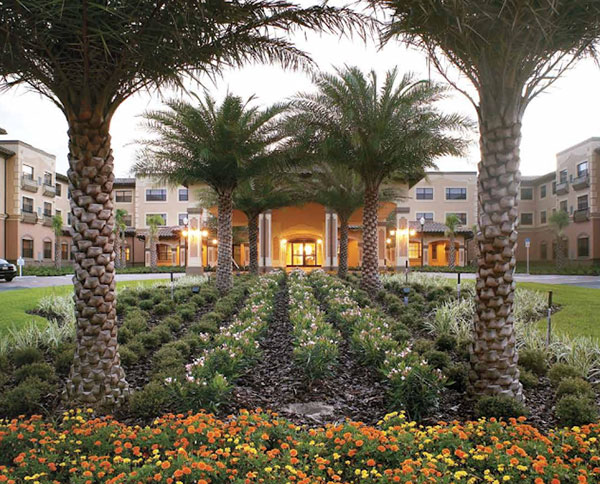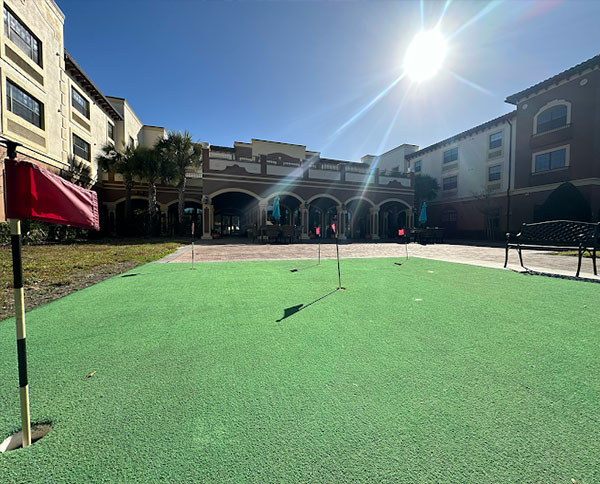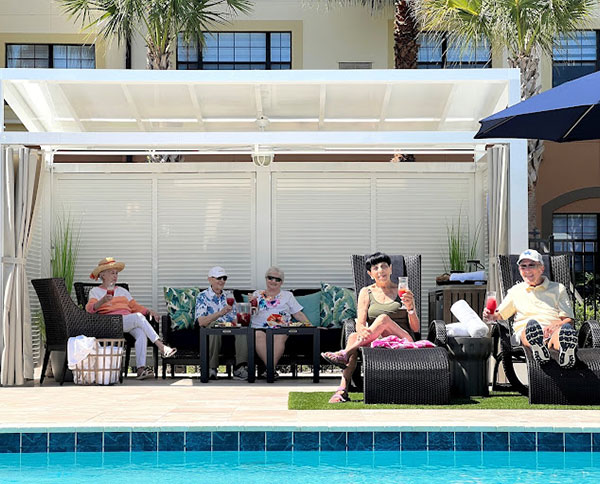What is Memory Care?
July 8, 2024
Memory care is a specialized form of care designed for people with conditions that affect memory, such as Alzheimer’s disease. It involves providing long-term care to reduce the effect upon an individual of conditions like dementia or Alzheimer’s. All memory care services provide wellness programs that promote brain health and function.
Key elements involved in the process of memory care include…
- Trained Staff: Memory care uses specially trained professionals who understand the complexities of memory-related conditions and their treatment.
- A Safe Environment: The environment is designed to be safe and supportive, with features like secured entrances and exits to prevent residents from wandering.
- Special Treatment Programs: These programs help manage symptoms such as forgetfulness, difficulty with daily tasks, self-care, confusion, anxiety, and agitation.
There are three basic types of memory care services available to patients.
- In-home care: Where a care professional provides care services to a person in their own or in a relative’s home.
- Adult day care: At centers providing care and companionship for a specific number of hours each day.
- Residential or assisted living communities with memory care: This involves relocating to a specialized residential setting for memory care, providing long-term, 24-hour support and supervision. While memory care can be administered at home or daily during adult day care, for many families, assisted living communities offering memory care prove to be the most comprehensive treatment for dementia.
Preparation, such as visiting senior living memory care communities and communicating with the staff about the individual’s preferences and medical requirements, can help to ease the transition.
It’s important to recognize there’s no one-size-fits-all approach to memory care. The most effective programs promote engagement and brain health through elements like physical activity, cognitive training, sleep hygiene, and an appropriate diet.
What kind of activities are employed in memory care?

Memory care activities are designed to engage residents, stimulate their brains, and provide a sense of accomplishment. Some of the frequently employed activities found valuable in memory care include…
Physical Activities:
Physical activity is crucial for improving brain health and may include exercises such as the following…
- Walking: Many communities offer walking groups for seniors.
- Gardening: Gardening can help restore dexterity and strength.
- Stretching and Light Exercise: Regular stretching and light exercise sessions are also common. These activities can help improve cognitive function, promote independence, and improve psychological health.
- Exercise Classes: Facilities may also offer physical activity in the form of regularly scheduled exercise classes.
- Yoga: Yoga can promote flexibility, balance, and relaxation.
- Chair Exercises: Exercises done while seated are designed to improve strength and flexibility.
- Dance Therapy: Dance can be a fun and engaging way to get seniors moving while helping to improve balance and coordination.
- Tai Chi: This gentle form of exercise can help improve balance and coordination, reduce stress, and increase flexibility.
- Aquatic Therapy: In facilities with a pool aquatic therapy can be a great low-impact exercise option.
- Music Therapy: While not strictly a physical activity, music therapy often involves movement and can be a great way to engage patients.
- Pet Therapy: Interacting with animals can provide both physical activity and emotional comfort.

Sensory Activities: Sensory activities are important as they connect to an emotional place that may otherwise be difficult to access. They can reveal what gives someone pleasure and help keep them calm, elevate mood, and decrease anxiety.
Task & Craft Activities: Such activities can help stimulate the brain and provide a sense of accomplishment. They can range from simple tasks like folding laundry to more complex ones like creating collages.
Social Activities: Social activities help reduce feelings of loneliness and promote a sense of community. These can include group games, communal meals, and special events.
Cognitive Activities: Puzzles, word games, and art projects can help stimulate the brain and maintain cognitive function.
Music and Art: Singing, listening to music, and visual expression through art projects can be very beneficial. Music can evoke memories and emotions, and art can provide an outlet for creativity.
Memory Games: Memory games can help stimulate the brain and improve memory function.
Knowing the person’s past interests and hobbies can help tailor the activities to what that person enjoyed. It’s also important to note that the effectiveness of these activities can vary depending on the individual and the stage of their dementia.
The Importance of Reminiscence Activities
Reminiscence activities seek to help individuals with dementia recall and cherish positive experiences and memories from the past. They often involve using props and prompts, like pictures, songs, and fragrances, to engage one’s senses. What follows are reminiscence activities that are commonly used in memory care…
Movie Night: Watching old movies, especially ones that were favorites of the individual, can trigger memories.
Music: Playing favorite songs or albums from the past can be a powerful memory trigger.
Cooking Favorite Recipes: Preparing and serving a family recipe can help a dementia patient reminisce.
Memory Lane Walks: Visiting places that hold memories can be a powerful reminiscence activity.
Favorite Objects: Engaging with favorite objects from the past can often inspire memories.
Personal Pastimes: Engaging in hobbies or activities that the individual used to enjoy can trigger memories.

Reminiscence Rooms: These are rooms decorated to resemble a certain era or theme, which help to trigger memories.
Sensory Boxes: Boxes filled with items related to a certain theme (like the beach or a holiday) can stimulate memories.
Art Therapy: Experimenting with sounds, visual expression through painting, and sensory craft experiences can trigger memories.
Crosswords and Quizzes: These can trigger memories and encourage conversation about various topics.
All the above memory care activities are designed to keep patients active and engaged, reduce anxiety, stimulate the brain, inspire feelings of accomplishment and personal competence, and allow their loved ones to feel connected.
Those same activities can also improve cognitive function, communication skills, promote self-worth, reduce loneliness, reliance on medications, and occurrence of common dementia symptoms. However, the key to successful activities in memory care is to tailor them to the individual’s interests and abilities.
For more information on local senior living communities offering memory care click here.